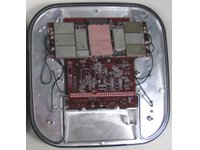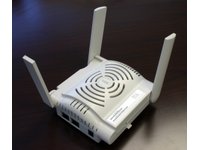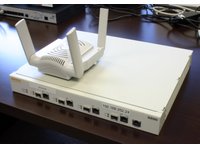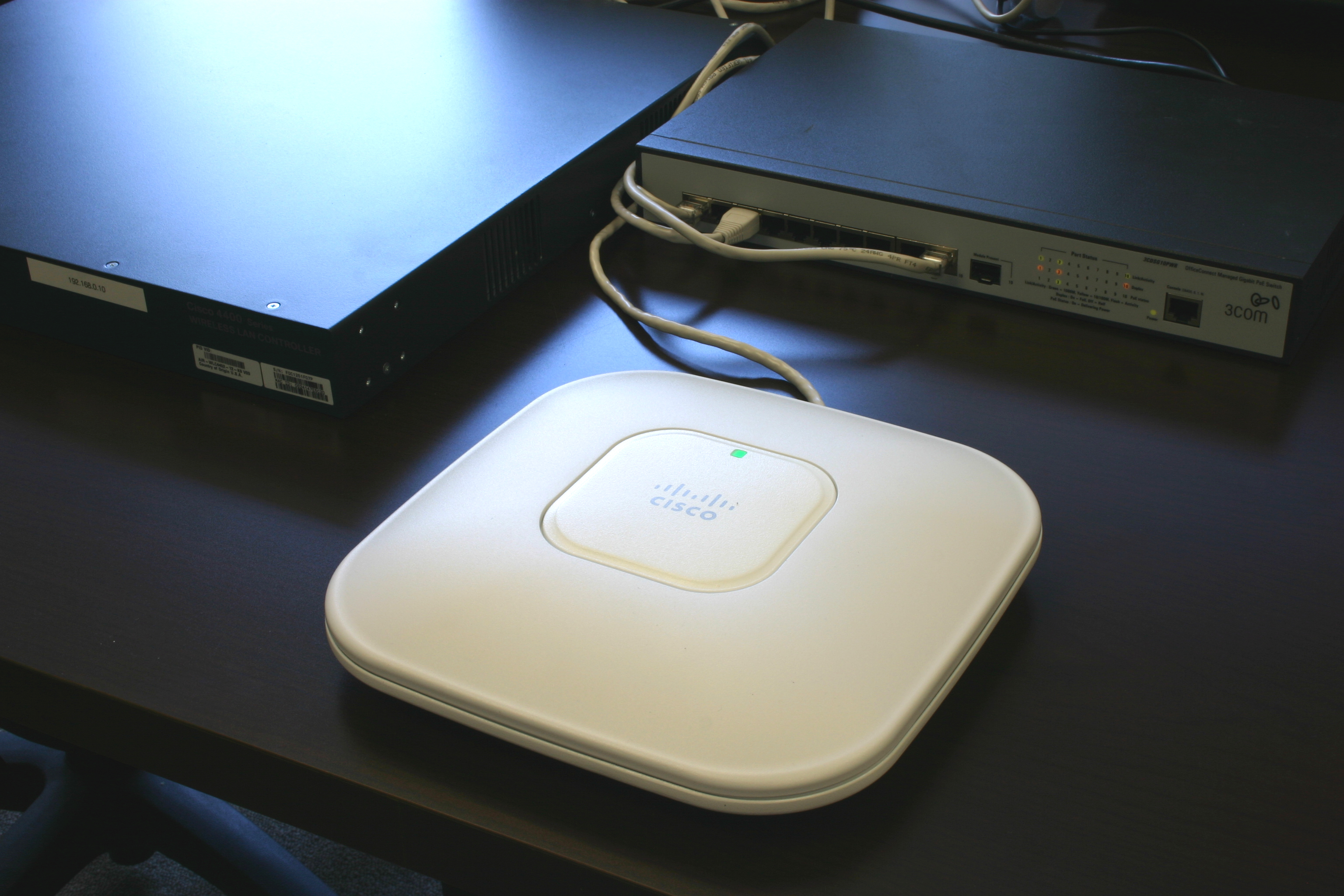Beamforming: The Best WiFi You’ve Never Seen
Test Gear: Cisco Aironet 1142 And Aruba AP125
Ruckus' main competitor is the Cisco Aironet AIR-LAP1142N-A-K9 sitting alongside a Cisco 4402 controller running firmware 6.0.182.0. As mentioned before, this is our one possible candidate for chip-based beamforming to compare against’s Ruckus’s antenna-based beamforming (BeamFlex). The curious thing is that Cisco ships the 1140 with beamforming disabled.
Like all dual-band access points, Cisco uses two radios here, one for 2.4 GHz and the other for 5 GHz. The 1142 attaches three antennas to each radio, utilizing a 2x3 transmit/receive array. Cisco’s beamforming uses two transmit antennas, so it follows that you can’t have beamforming and spatial multiplexing operating concurrently.
So, it’s curious that Cisco opts to prefer spatial multiplexing out of the box rather than its shiny new on-chip technology. Perhaps this is because the feature is so new that the company wants to ease into adoption. But could it have something to do with performance? We’ll see.
Comparing the architecture of the 1142 against the Ruckus 7962 is intriguing. I couldn’t dissect the Cisco unit, but I did find these photos in some online patent documentation.


We also tested with an Aruba AP125 access point and Aruba 3200 controller with firmware 3.4.0.1 build 21611. There’s not much to report here. This is a standard issue, enterprise-class, dual-band access point with three antennas you’re never quite sure how to orient. The AP125 is pretty representative of “standard 802.11n,” and I view it here as a performance baseline for comparison against Cisco and Ruckus.


Rounding out the test platform, I used a Dell 620 notebook with the Broadcom NetXtreme 57XX Gigabit Ethernet controller as the server and a Lenovo X61 with an Intel 4965AGN adapter (driver version 12.4.0.21) as the target client. The switch tying everything together was a 3Com 3CDSG10PWR OfficeConnect.
Get Tom's Hardware's best news and in-depth reviews, straight to your inbox.
Current page: Test Gear: Cisco Aironet 1142 And Aruba AP125
Prev Page Test Gear: Ruckus 7962 Next Page Test Environment-
pirateboy just what we need, more retarded failnoobs clogging up the airwaves with useless braindead movieclips...yaayReply -
bucifer This article started up pretty good with lots of technical data and the beamforming technology in theory but after that the goodness stopped.Reply
1.You cannot compare two products by testing them with a in-house developed software. It's like testing ATI vs nVIDIA with nvidia made benchmark.
2.If you do something get it done, don't just go with half measures. I don't care if you didn't have time. You should have planned this from the beginning. The tests are incomplete, and the article is filled with crap of Rukus and Cisco. -
Mr_Man In defense of your wife, you didn't HAVE to use that particular channel to view all the "detail".Reply -
@Mr_Man: With a name like yours, I'd think that you'd sympathize with Chris a bit more :P Unless (Mr_Man == I likes men) :DReply
-
Pei-chen Both Tyra and Heidi have personal issues and would be pretty difficult friend/mate.Reply
The network idea sounds better. I couldn’t get my 10 feet g network to transmit a tenth as much as my wired network without it dropping.
-
zak_mckraken There's one question that I think was not covered by the article. Can a beamformaing AP can sustain the above numbers on two different clients? Let's say we take the UDP test at 5 GHz. The result shows 7.3 Mb/s. If we had two clients at opposite sides of the AP doing the same test, would we have 7.3 Mb/s for each test or would the bandwidth be sliced in 2?Reply
The numbers so far are astonishing, but are they realistic in a multi-client environnement? That's something I'd like to know!
